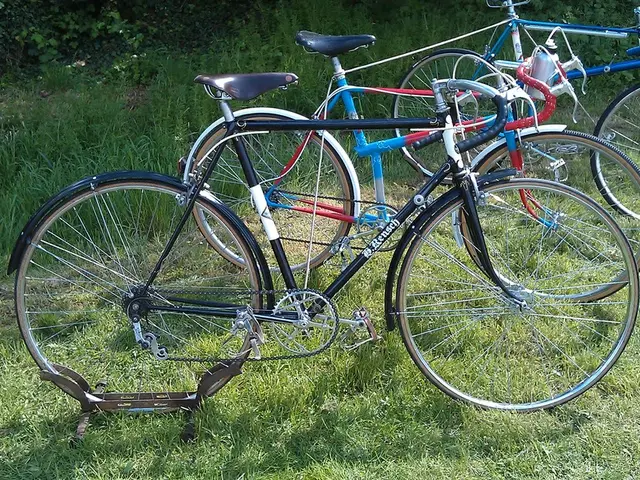Additional Quantities of North Korea's Large Howitzers Move into Russia
The Russian military engaged in conflict with Ukraine in February 2022, bringing approximately 2,000 self-propelled howitzers. Over 34 months of intense fighting, at least 800 of these artillery pieces have been lost to Ukrainian actions, with hundreds more being rendered inoperable due to a scarcity of replacement gun barrels.
Production of new howitzers has not kept pace with demand, while Russia's stockpile of older Cold War-era howitzers may have diminished by half, as technical teams search through storage depots for operable guns or usable components from otherwise dilapidated weapons.
Consequently, Russia appears to be running out of mobile artillery. This shortage may explain why, for the second occasion in six weeks, North Korean self-propelled howitzers have been observed traveling through Russia via train cars. North Korea has emerged as a significant backer of Moscow's artillery operations.
This close partnership between the Russian artillery corps and the elusive North Korean arms industry can be presented in the most positive light, or acknowledged more realistically as Russia's growing reliance on North Korean weaponry.
The North Korean-manufactured M1989 howitzers fire 170-millimeter shells, an unconventional caliber for the Russians. Estonian analyst Artur Rehi observed that most Russian guns use 122- or 152-millimeter shells. North Korea has supplied Russia with potentially countless numbers of these rounds to keep its pre-war guns firing consistently, at a potential rate of around 10,000 or more shells daily.
Previously, North Korea supplied ammunition in calibers that Russia could theoretically produce itself. However, the issue was not capability, but production capacity. If a diplomatic rift were to develop between Russia and North Korea, Russian artillery could still operate, although less frequently.
However, with the arrival of more North Korean M1989 howitzers along the front line, this situation is changing. Each M1989 that arrives in Russia appears to further entrench Russia's dependency on North Korea, as it is the sole manufacturer of 170-millimeter howitzer ammunition in the world. Iran has also acquired M1989 howitzers, further raising questions about potential economic or military exchanges between Russia and North Korea.
A year ago, the Ukrainian analysis group Frontelligence Insight reported the first million North Korean shells arriving in Russia. The group wondered if Russia had offered financial support to North Korea or shared other military technologies in return for the ammunition. Now, it seems the answer lies in potential technology transfers. According to U.S. Navy Adm. Samuel Paparo, Russia "will likely" transfer missile and submarine technology to North Korea, potentially advancing North Korea's long-running effort to develop and deploy nuclear-armed submarines capable of launching intercontinental ballistic missiles.
This deal appears to significantly favor North Korea, with Russia gaining artillery while potentially handing over submarine and missile technology. With its depleted artillery corps gradually incorporating North Korean components, Russia appears to have limited alternatives. If North Korea withholds its support, it could restrict the operation of a growing number of Moscow's most significant weapons.
Russia's reliance on North Korea for 170-millimeter howitzer ammunition has become more evident, as evidenced by the observed North Korean self-propelled howitzers traveling through Russia. This partnership with North Korea, which is the sole manufacturer of such ammunition, may suggest Russia's dwindling resources with regard to artillery.
The ongoing conflict between Ukraine and Russia has led to a significant loss of Russian artillery, including approximately 800 self-propelled howitzers. As a result, Russia is reportedly running out of mobile artillery, which has led to the observation of North Korean self-propelled howitzers in Russia.








